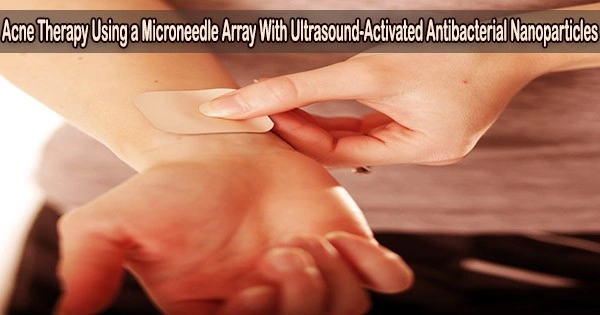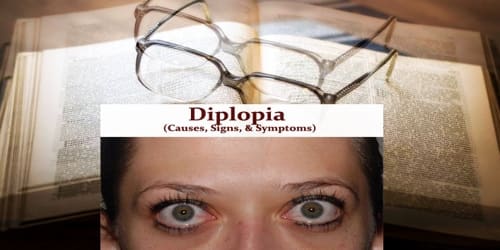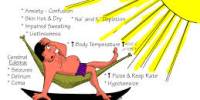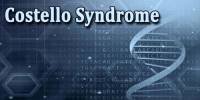A new microneedle patch has been developed by a research team at the University of Hong Kong (HKUMed) under the direction of Professor Kelvin Yeung from the Department of Orthopedics and Traumatology, School of Clinical Medicine, LKS Faculty of Medicine, to provide a highly effective non-antibiotic approach for the treatment of skin infections.
In short, the design created with zinc-based metal-organic framework (MOF) antibacterial nanoparticles that respond to ultrasound promises painless delivery to treat bacterial infection on skin tissue while also facilitating skin The novel microneedle is around 50 microns in diameter, similar to a typical hair. The findings have been published in Science Advances.
More than 80% of teenagers and young adults experience acne, a skin condition that is widespread around the world. A hypoxic microenvironment is created in the skin tissue as a result of excessive lipid production that clogs hair follicles. This undesirable condition particularly favors the proliferation of Propionibacterium acnes (P. acnes) bacteria. This P. acnes bacteria that affects millions of people worldwide mainly cause pimples, regarded as a skin infection.
Without proper care, it can not only worsen patients’ physical and mental health, but also turn into a chronic inflammatory condition. Clinical care typically involves the use of over-the-counter medications, such as salicylic acid and benzoyl peroxide, or the topical or oral administration of antibiotics. However, such treatments can be ineffective and may have unpleasant side effects.
The new microneedle patch enabling ROS generation upon ultrasound stimulation, regarding as a non-antibiotic and transdermal approach, can not only effectively address the infection induced by P. acnes bacteria, but also facilitates the skin repair due to zinc ion release. Due to the specific killing mechanism of ROS, we believe that this design is also able to address the other skin infections induced by fungi, parasites, or viruses, such as tinea pedis (‘Athlete’s Foot’ or ‘Hong Kong Foot’ in slang).
Professor Kelvin Yeung Wai-kwok
Antibiotics that are either topically or orally typically serve as the first line of treatment for infected pimples. However, the therapeutic outcome of topical antibiotic therapy raises questions, especially when the medications penetrate the skin tissue.
Additionally, the efficacy of the treatment declines as bacteria become drug-resistant or invade subcutaneous tissue. Extracellular polysaccharides, which P. acnes bacteria can release, help to establish a biofilm that deters attacks from immunological or antibacterial agents.
Pharmaceutical chemicals are used in the majority of microneedle products on the market to treat acne. However, frequent use of antibiotics may lessen the bacteria’s susceptibility to medication. Acne sufferers who have had the condition for a long time are aware that repeated usage of the same products can considerably lessen their effectiveness.
The HKUMed team has developed a novel microneedle patch that allows for the less invasive transdermal distribution of ultrasound-responsive antibacterial nanoparticles to treat infection brought on by P. acnes.
The microneedle patch in the current design contains ultrasound-responsive antibacterial nanoparticles that react fast and effectively to bacterial infection. Thus, the usage of medications to cure acne is avoided.
The modified nanoparticles, which are made of ZnTCPP and ZnO, may efficiently oxidize the important cellular macromolecules of bacteria by producing a significant amount of reactive oxygen species (ROS) in response to ultrasound stimulation. The results demonstrate that the killing of P. acnes bacteria mediated by ROS can reach 99.73% after 15 minutes of ultrasound stimulation.
Also, the levels of inflammatory markers, including tumor necrosis factor-a (TNF-α), interleukins (ILs), and matrix metalloproteinases (MMPs) are significantly reduced. Furthermore, the zinc ions released can stimulate genes involved in DNA replication, increasing the number of fibroblasts and improving skin restoration.
Professor Kelvin Yeung Wai-kwok said, “The new microneedle patch enabling ROS generation upon ultrasound stimulation, regarding as a non-antibiotic and transdermal approach, can not only effectively address the infection induced by P. acnes bacteria, but also facilitates the skin repair due to zinc ion release. Due to the specific killing mechanism of ROS, we believe that this design is also able to address the other skin infections induced by fungi, parasites, or viruses, such as tinea pedis (‘Athlete’s Foot’ or ‘Hong Kong Foot’ in slang).”
















